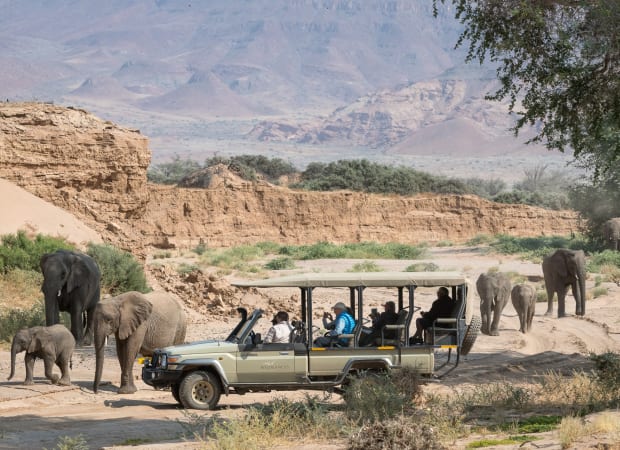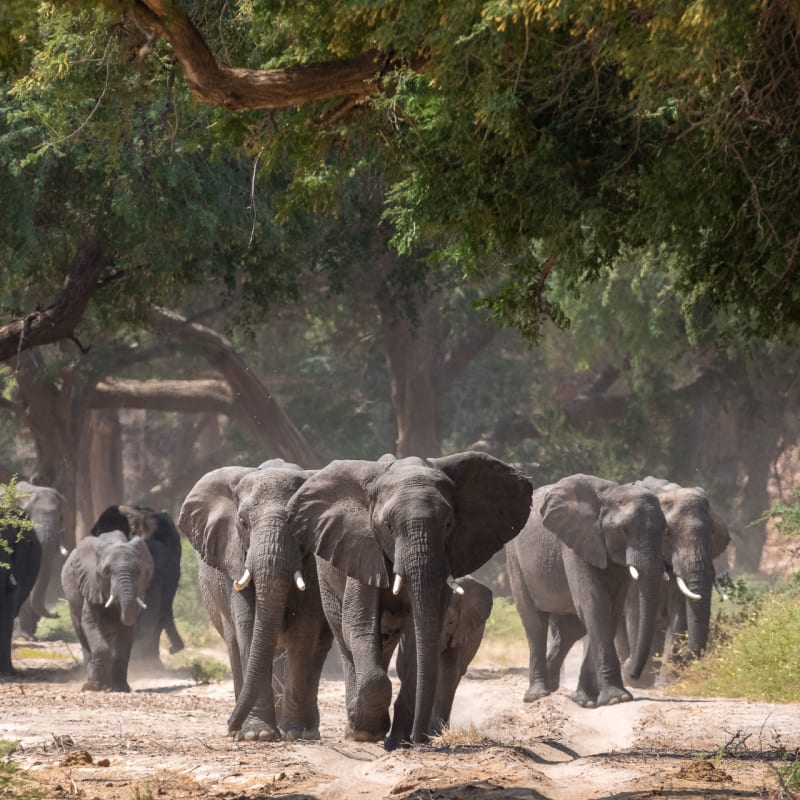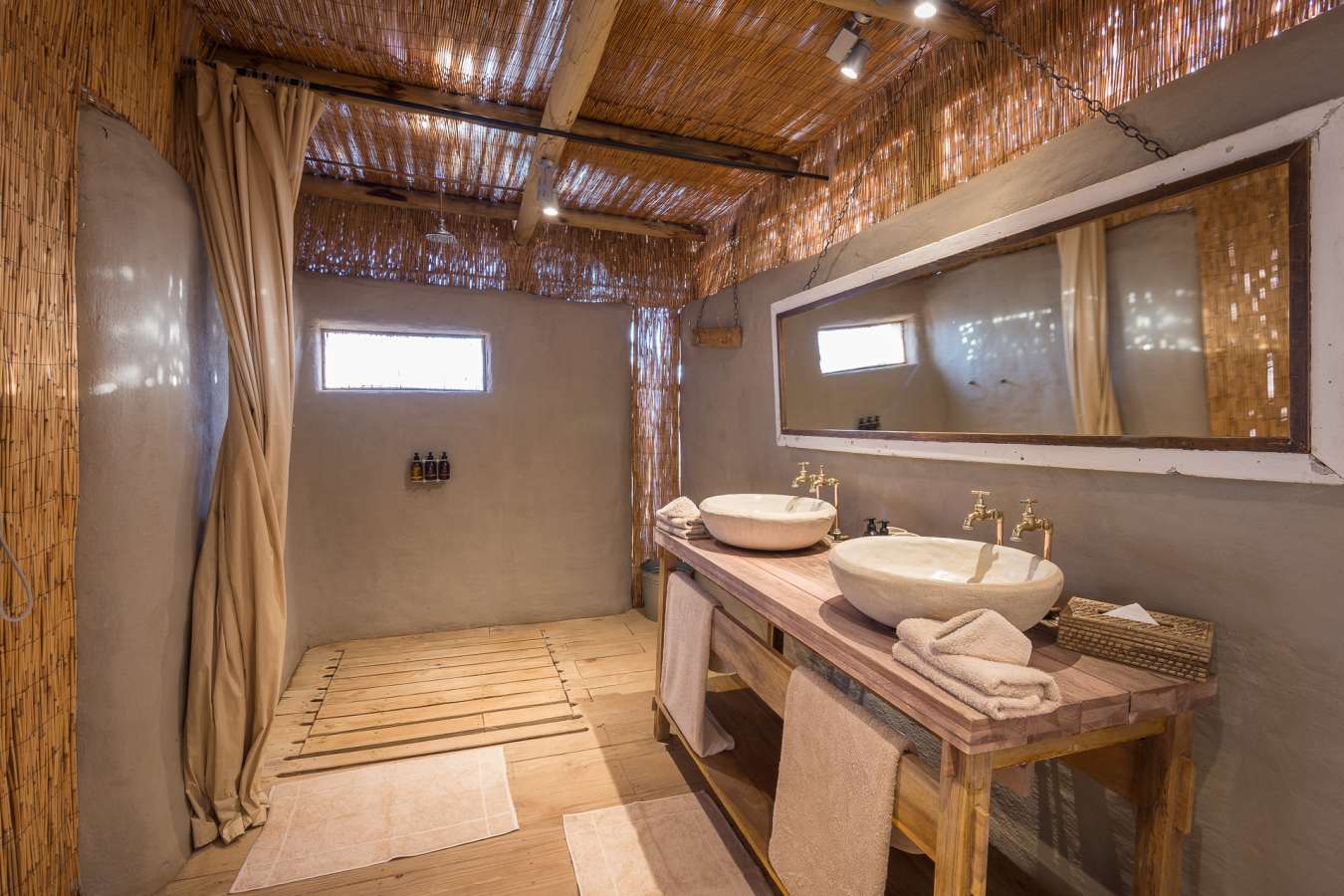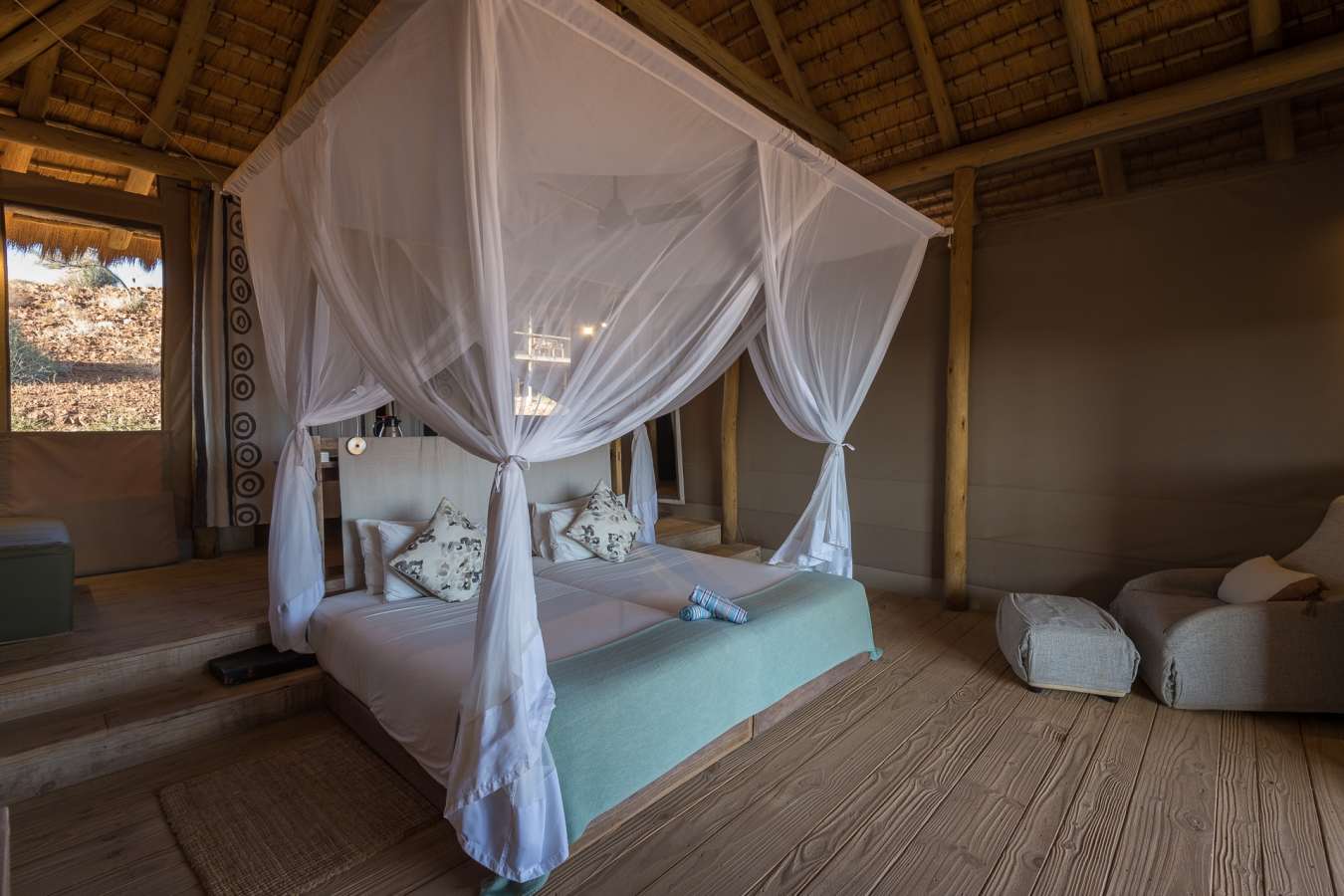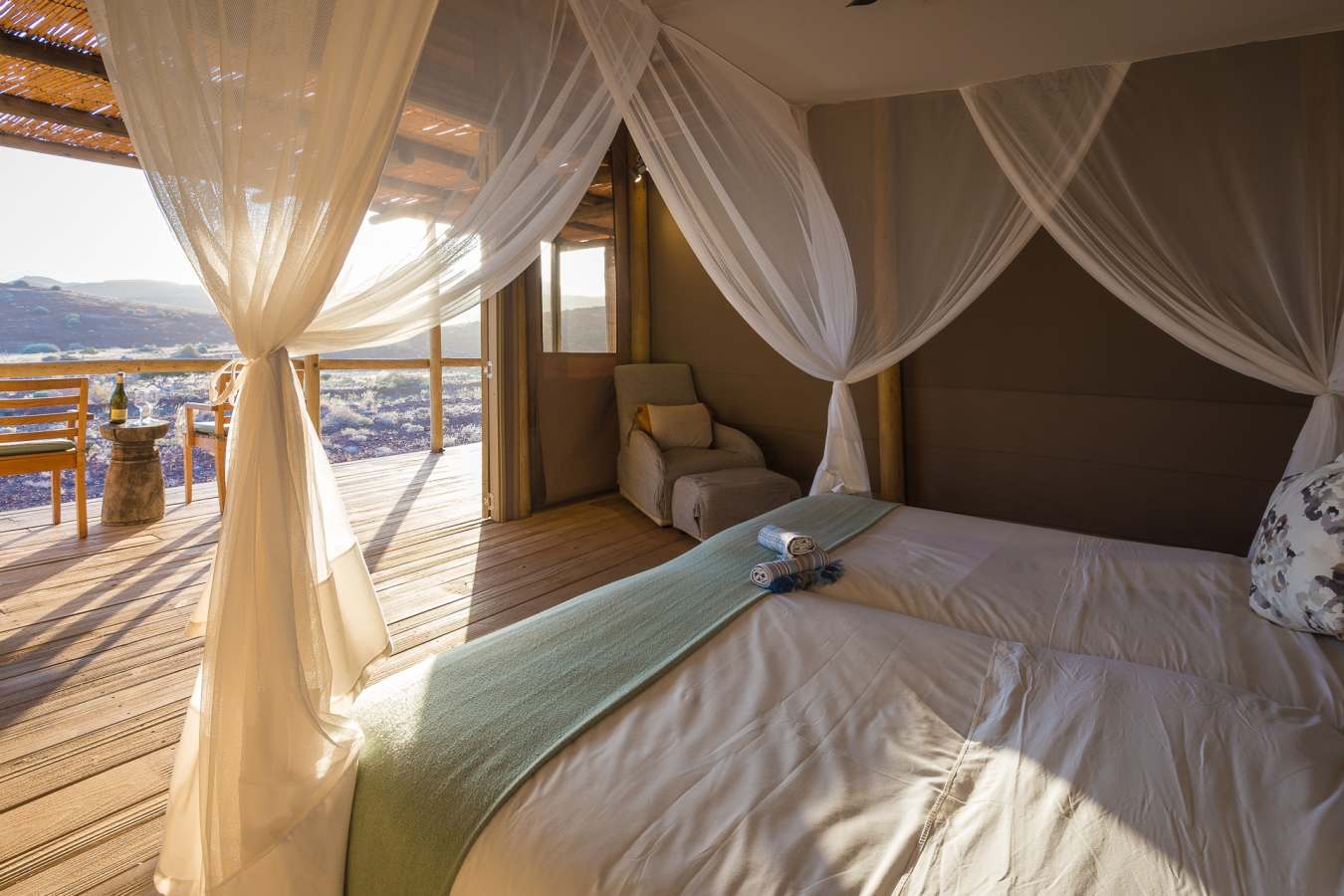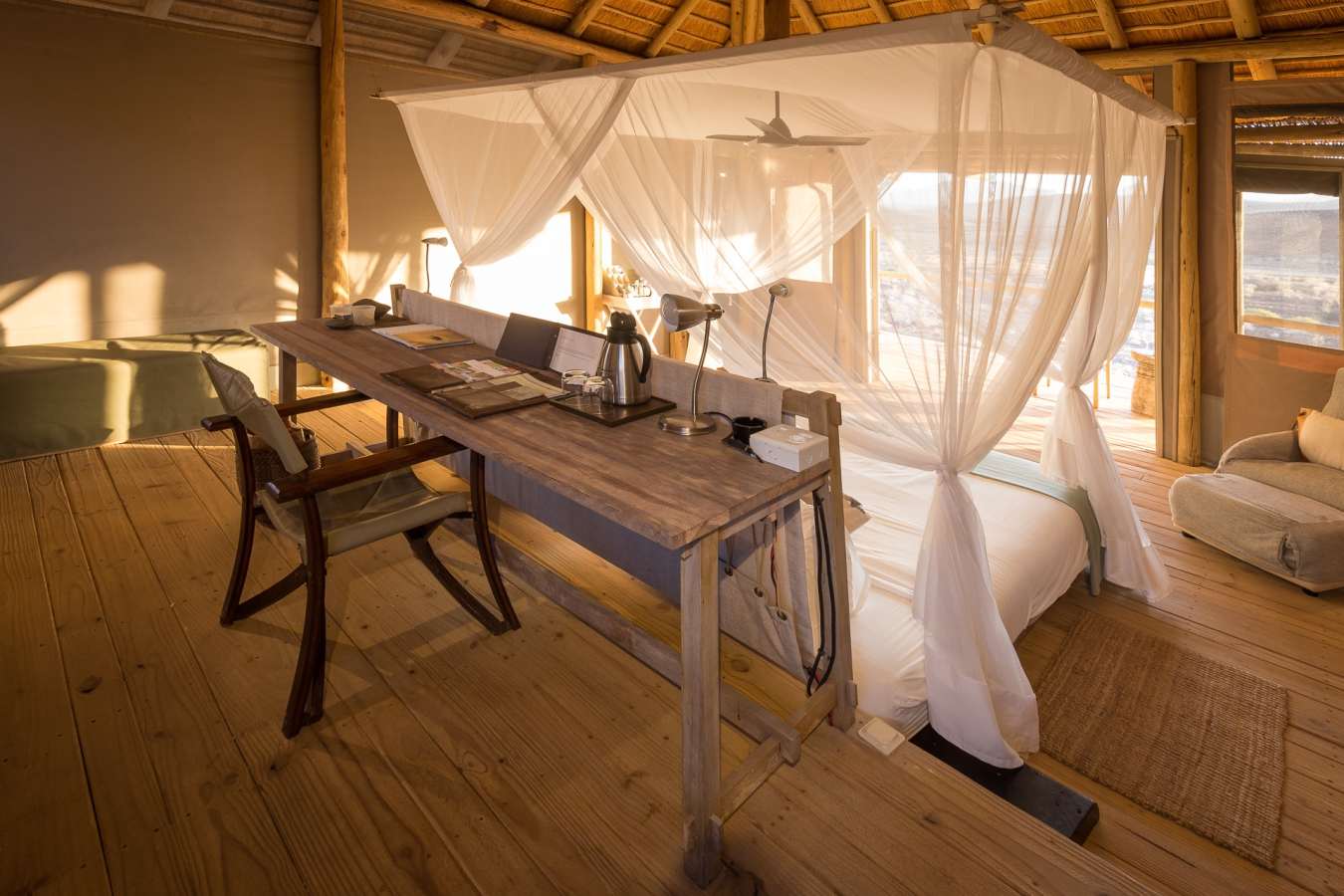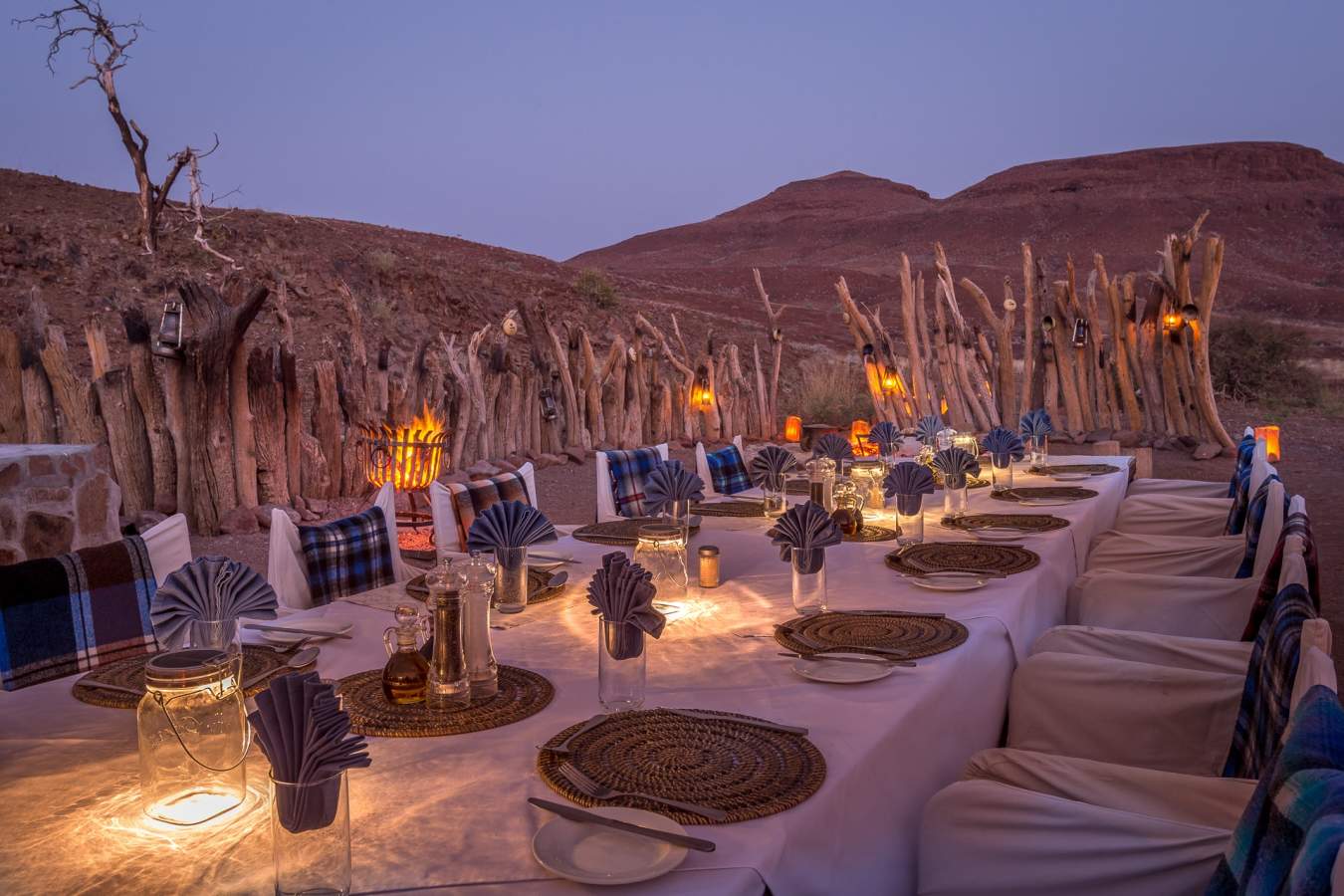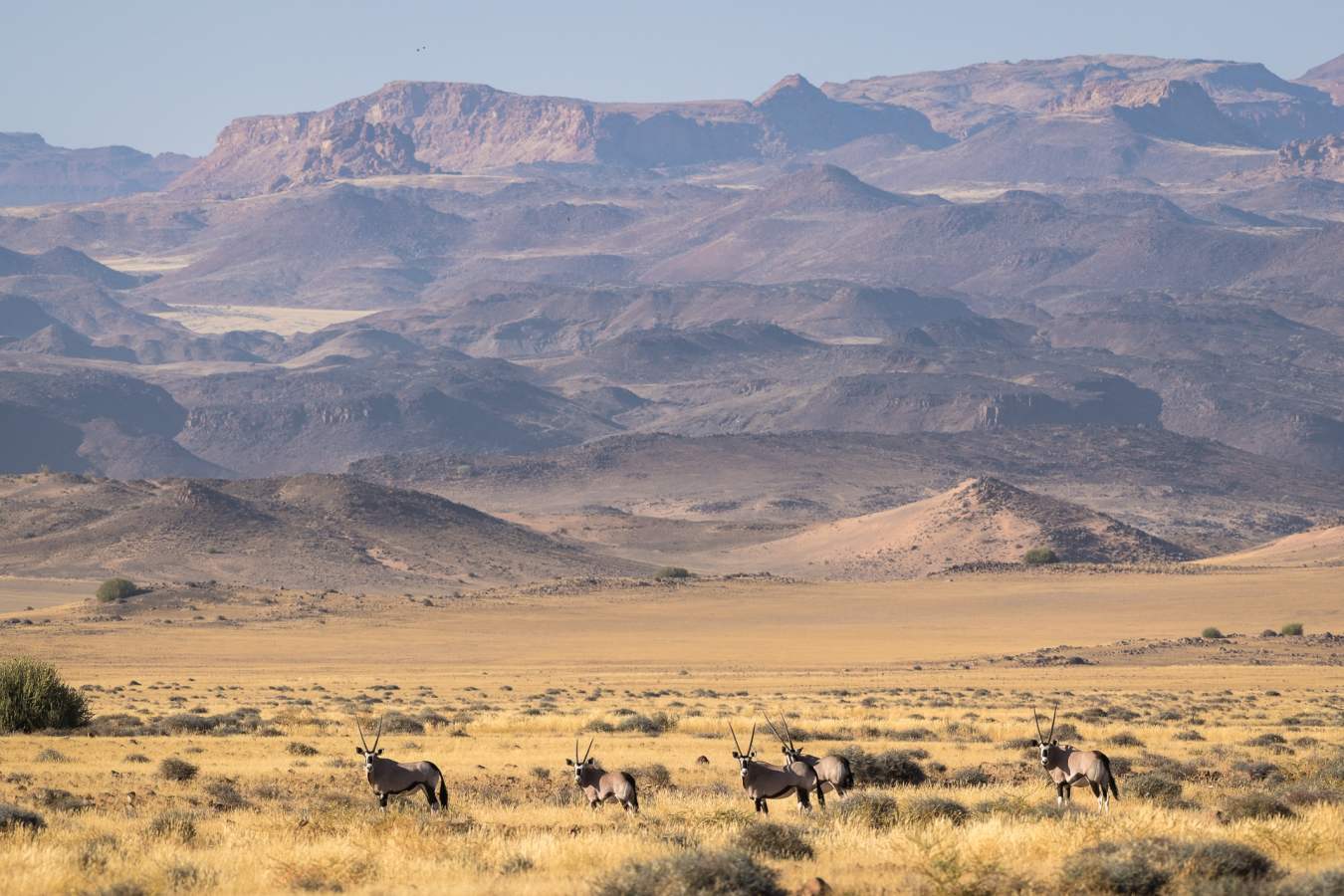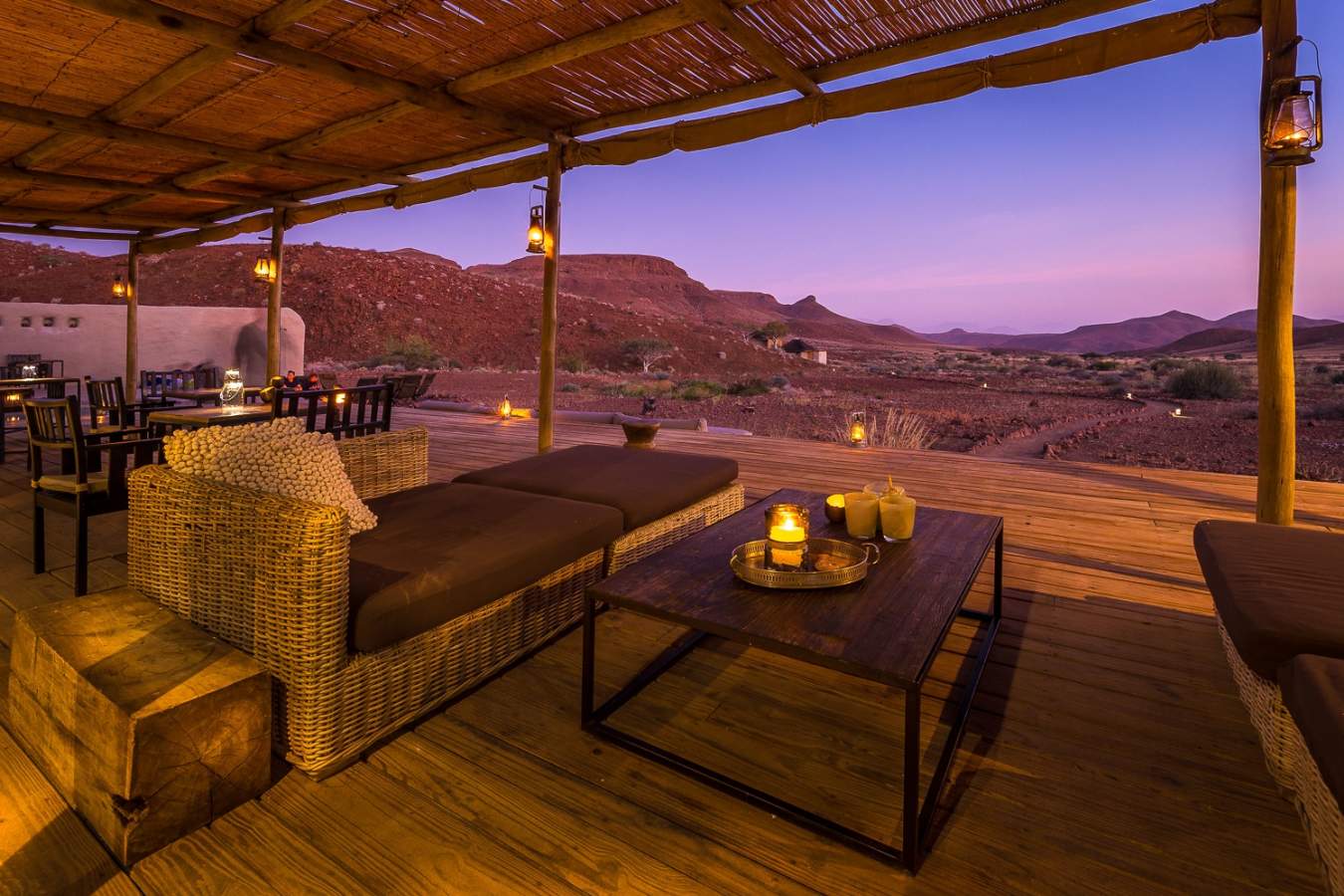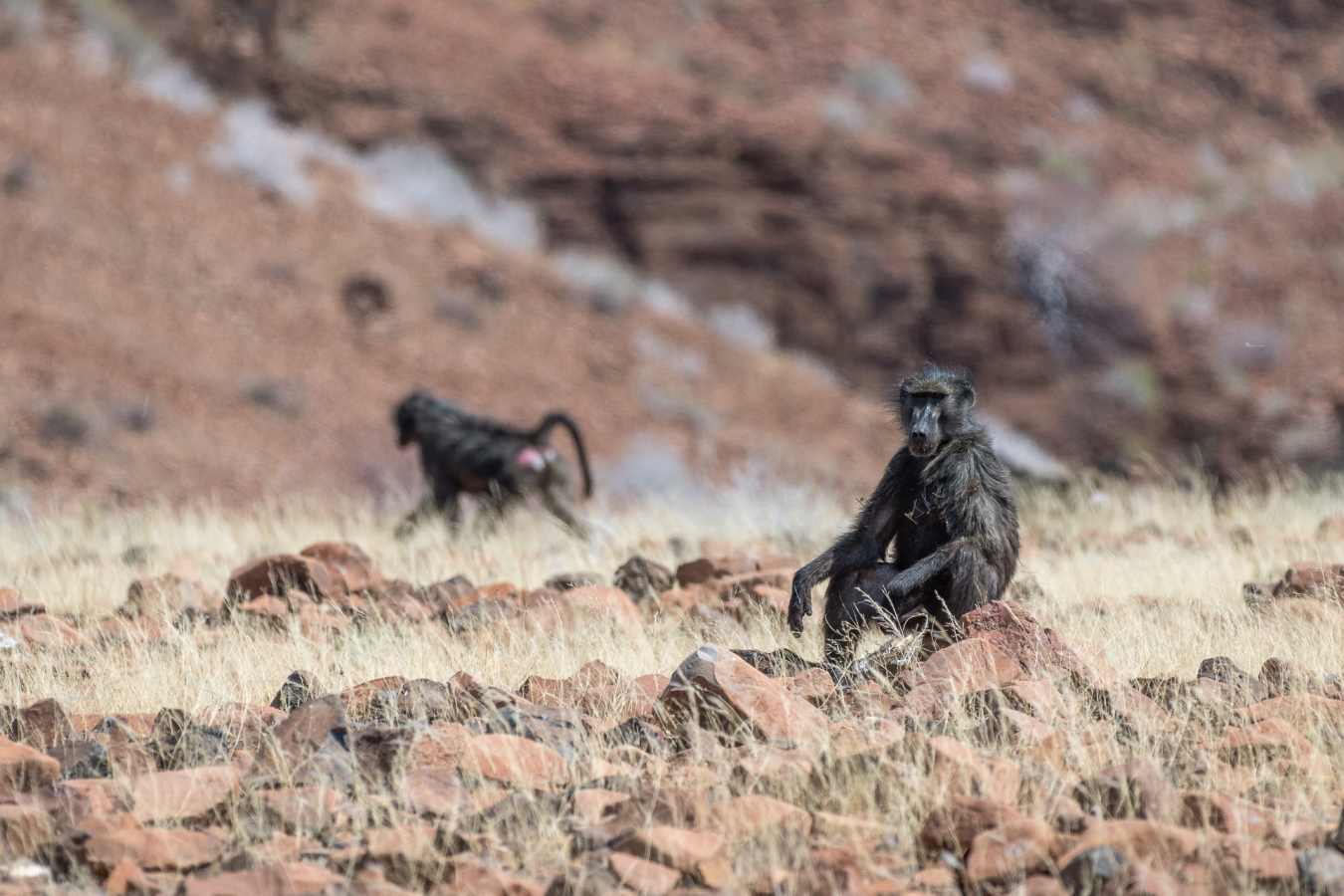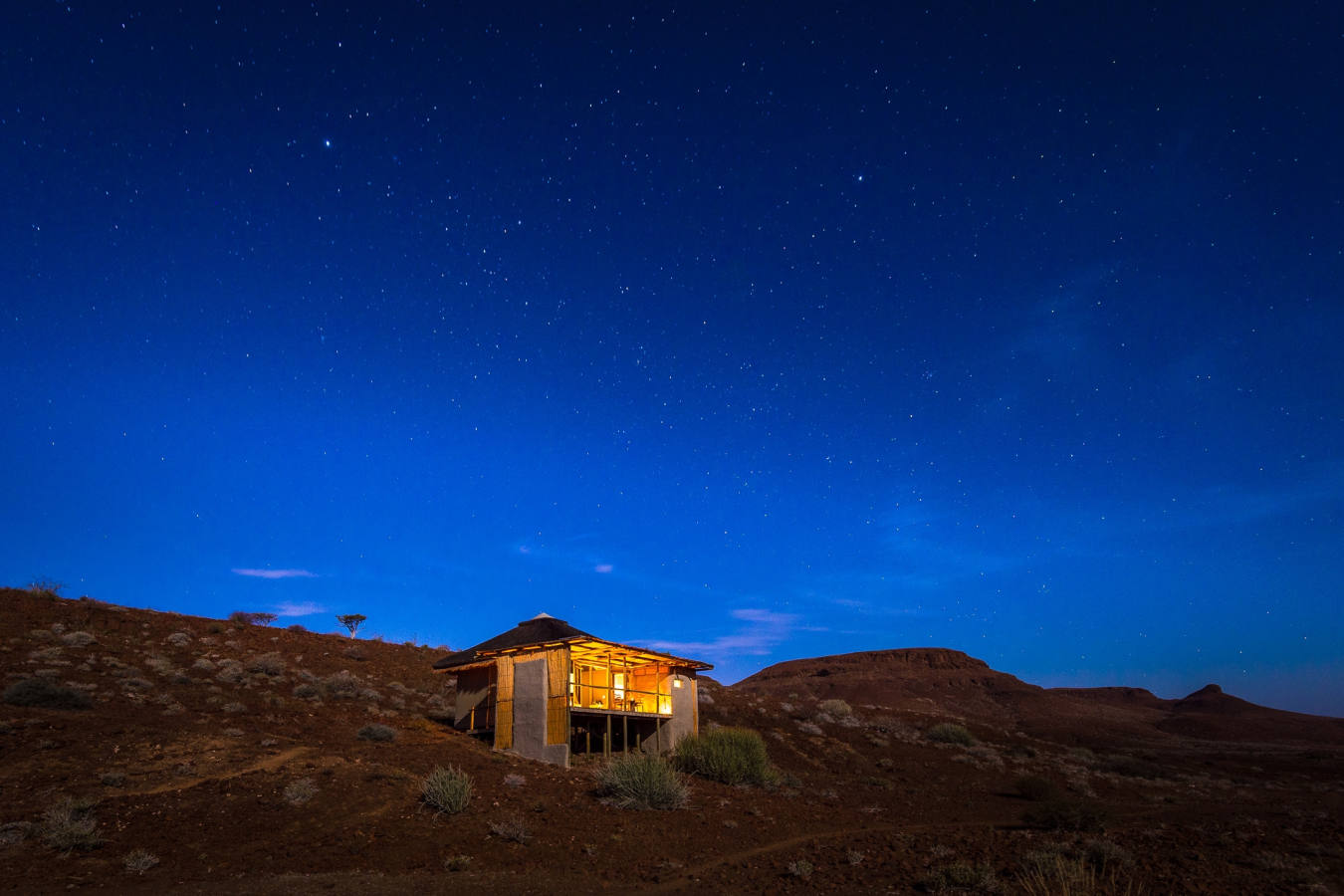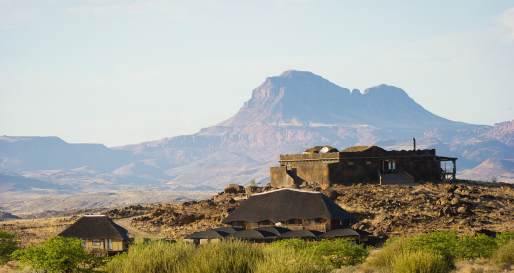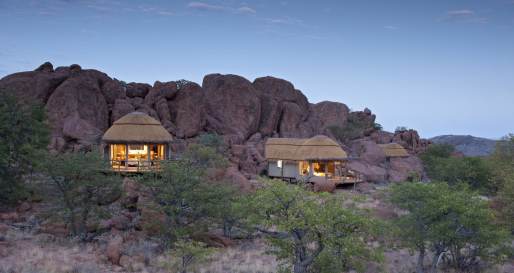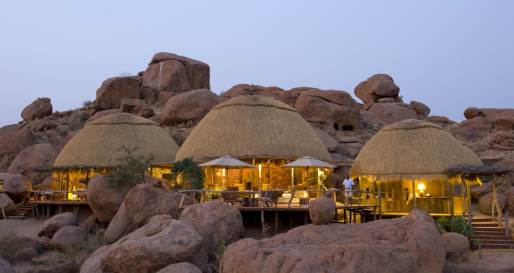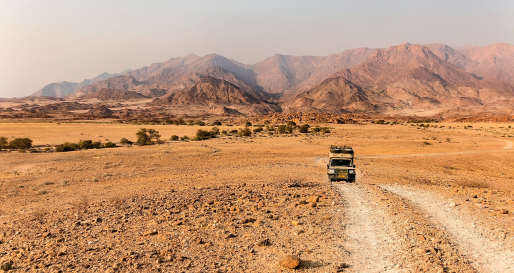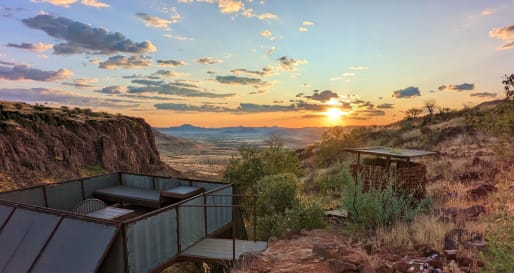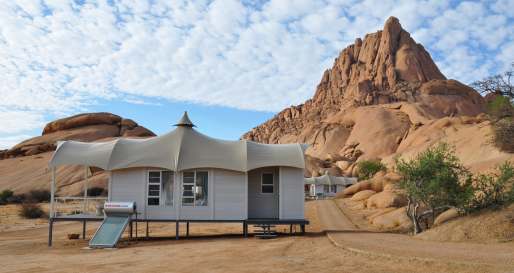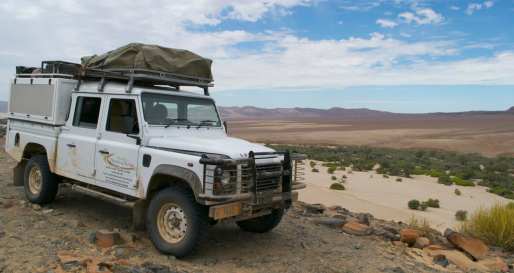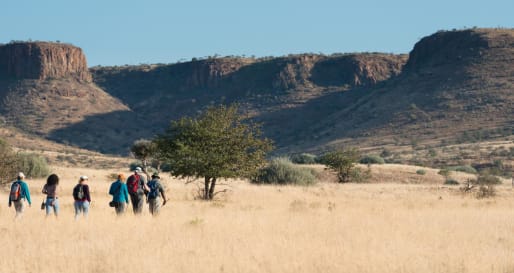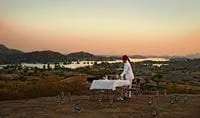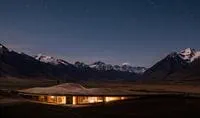The eco-friendly construction of Damaraland Camp has merged new technology with ancient methodology in an incredibly inventive manner. Another unique feature of this sustainable ecotourism venture is that it is owned and largely run by the local community - who have injected their own distinctive optimism and cheerful nature into the Damaraland Camp experience. This unusual flavour comes from the mixed heritage of the local peoples, which include Nama-Damara, Herero, Owambo, and the displaced Riemvasmakers of South Africa.
Accommodation at Damaraland Camp consists of 10 adobe-styled, thatched units each raised on individual wooden decking - part of which extends out to form a large viewing deck with magnificent vistas. Recently refurbished, each tent has en-suite facilities with a shower, flush toilet and wash basins as well as a dressing area at the back of the tent and a built-in fan.
Guests can enjoy game drives and walks with expert guides who take safaris early in the morning or in the evening and into the night to spot nocturnal species that cannot be seen during daylight hours. Large game is not concentrated year-round here, with the natural cycle of rainfall dictating the seasonal movement of wildlife along the Huab River. Activities at Damaraland Camp revolve around exploring the Huab River system. The morning and afternoon drives go in search of desert-adapted elephant, gemsbok, greater kudu, springbok, and occasionally lion, cheetah and black rhino can be spotted. Interesting flora such as euphorbias and shepherd's trees can be viewed on the way to some of Africa's best known rock engravings, including the famous Twyfelfontein etchings.


